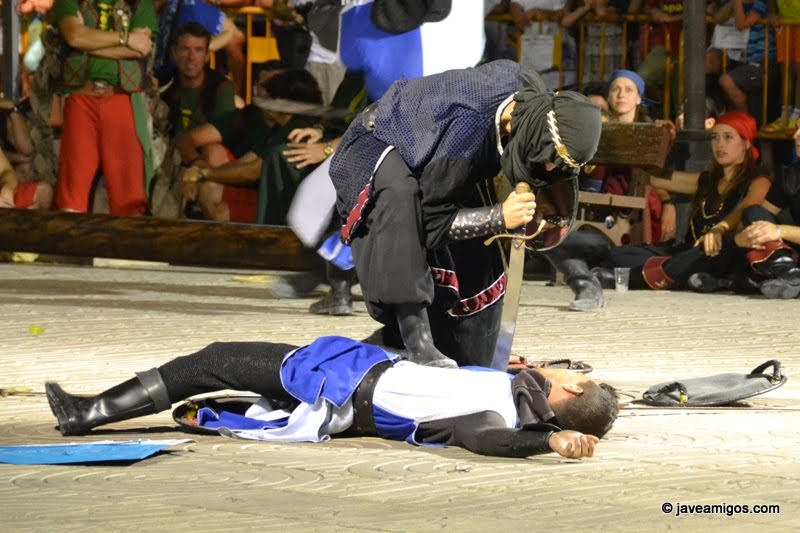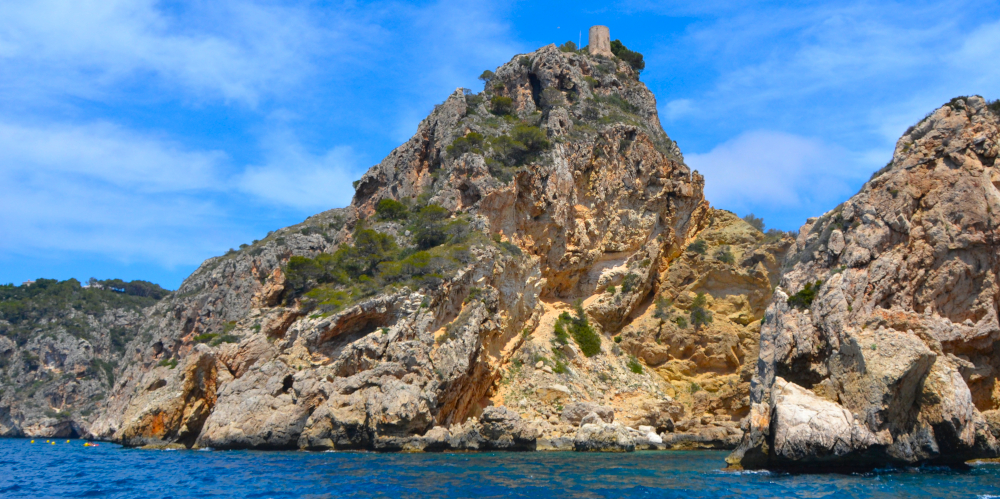
Every summer, the port of Xàbia is filled with vibrant colours and deafening noise as the town celebrates its annual ‘Moors & Christians’ fiesta. The Moors sway majestically through the streets to the deep beat of a bass drum, their flamboyant costumes almost merging into one long line across the road. The Christians bounce confidently, their helmets and armour glistening in the late evening sunshine as they cheer triumphantly to celebrate another victory. It’s a charming celebration, almost unique to this part of Spain, and one that has a clear reason to be.
Whilst the fiesta essentially reminds us of the Muslim invasion of the Iberian peninsula and the centuries-long effort to re-conquer it by Christians forces, the festivities are also a hint of a terrible danger that the people who lived so close to the sea had to endure in their daily lives: the threat of the pirates.
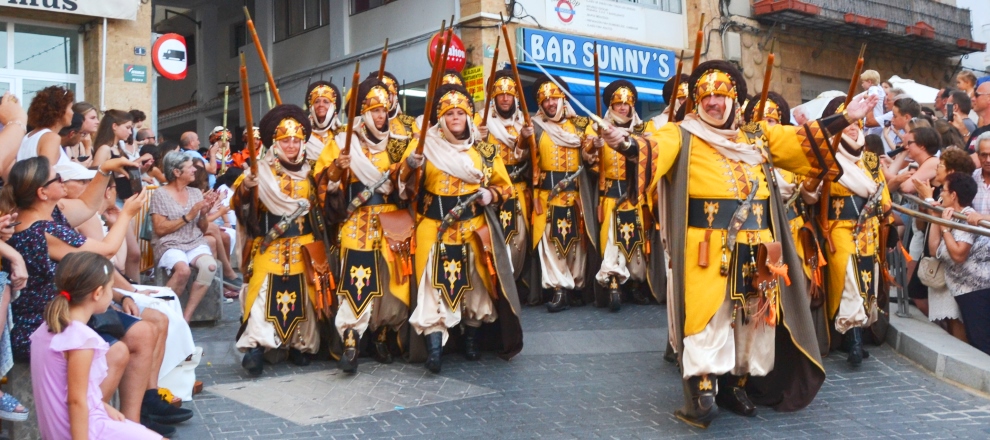
Mention pirates and the most common images conjured up in most people’s minds might be the hooked villain of Captain Hook from ‘Peter Pan’ or even the bumbling Jack Sparrow from the ‘Pirates of the Caribbean’ film series. But the reality is a terror that threatened the coast of Xàbia for more than five centuries and would strike fear in the population.
The Barbary corsairs operated out of North Africa between the 16th and 19th centuries, and repeatedly raided towns along the Mediterranean coast, seeking profit from looting and pillaging, and from taking prisoners to be sold into the lucrative Arab slave market or held ransom. The sight of an unknown sail on the horizon spread fear along the coast, the approaching galleys often carrying more than a hundred fighting men eager to line their pockets.
However, Xàbia had been subject to attacks for many years prior to the emergence of the powerful corsairs. After Jaime I of Aragón took Valencia in 1244 and drove out most of the Muslim inhabitants of these lands, the region was subjected to several raids by pirates whose number had been swelled by exiled moriscos. The first documented attack in Xàbia occurred in early September 1304 when a raiding party set the valley of San Bartolomé ablaze, resulting in Jaime II of Aragón ordering the people of Xàbia to build a tower to maintain a defensive line to the south of Dénia.
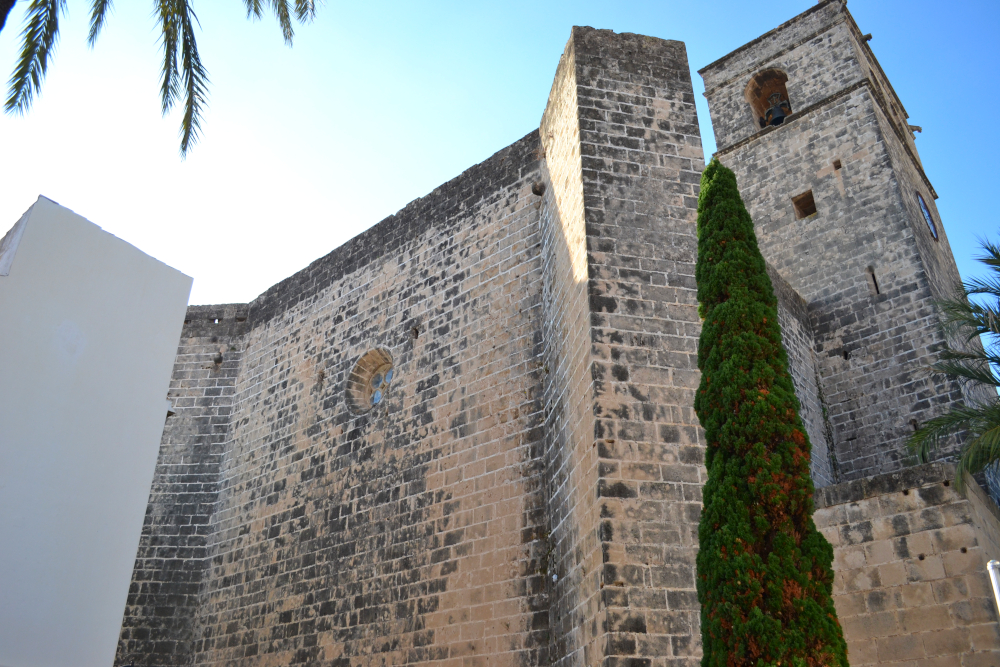
The historic church of San Bartolomé is a fine example of Isabelline Gothic architecture common in the late 15th and early 16th centuries. However, its origins lay with a simple square defensive tower built as a result of the king’s demand in 1304. Part of this tower can still be made out at the eastern end of the current church building, a plain high wall with two square towers built at an angle at each corner (see image above). When the fortress-church was built in the early 16th century, architect Domingo Urteaga simply incorporated the square tower into his new design. Battlements crowned the building – features that have recently been restored, amidst much controversy, to the bell tower – and machicolations can still be seen above both doorways, great holes through which defenders could throw rocks or hot liquids on attackers trying to force open the doors below whilst there are no big grand windows, just narrow slits through which a bow or musket could be fired.
By the 15th century, attacks from the sea had become frustratingly regular. By now, Xàbia was surrounded by high walls. A century earlier, a smaller enclosure was built around the new fortress-church, following the lines of what are now the streets of Carrer Roques, Ronda Sur, Carrer Pastores, Carrer Verge del Pilar, Avinguda Principe d’Asturias and Ronda Nord. At the junction of Calle Sor Maria Gallard and Carrer Roques, opposite the eastern door of the indoor market, there is an older tower structure – Torre d’En Cairat – incorporated into a more modern building and this is thought to be the only surviving piece of this earlier wall and actually dates from the Muslim period when it originally formed part of a farmstead.
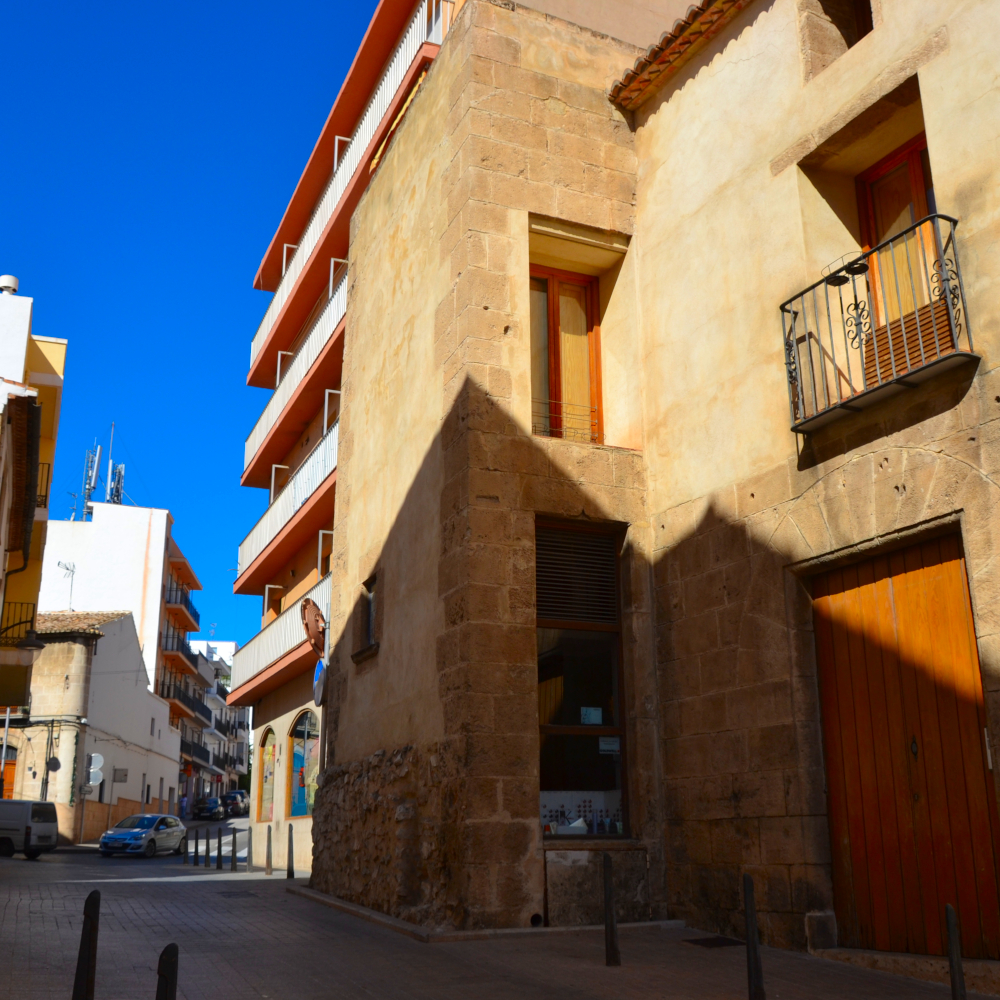
The newly expanded wall had three main gates (a fourth was added at the beginning of the 19th century). Portal de la Mar, located close to Bar Trinquet, was the main access point to the sea and it was here that the fishermen and their families lived. To the south, Portal del Clot (or San Jaime) allowed access to the valley and its fertile soil, whilst the gate to the west, Portal de San Vicente (or Ferretería, due to its proximity to the blacksmith forges located outside of the walls) was the main entrance from the inland territories. These gates were closed at night and guarded by watchmen armed with muskets.
Along the coast, money was invested in the construction of forts and watchtowers to provide an effective early warning system against the pirates. The castle of San Martín (also known as ‘El Arenal’ or ‘de la Fontana’) was built in 1424 on the orders of Alfonso V of Aragon. Destroyed by British troops during the Peninsular War, nothing remains today, except a few stone walls incorporated into the gardens of an apartment block called ‘Edificio del Castello’ which are believed to be some of the ruins.
To the north, at the other end of the bay, the castle of San Jorge was built in 1578 in the corner of Cabo de San Antonio, roughly where the harbour is now. Built on the remains of an ancient Moorish mosque, there is nothing left which might give evidence to its existence. (A third castle, that of Granadella, was built much later in the 18th century.)
Several watchtowers, built in the mid-16th century, are in better condition than the castles. Located almost equidistant from each other and the castles, they were built on the top of Cabo de San Antonio (now disappeared), on the high land above Portitxol (now in private hands) and at the end of Ambolo, overlooking the Granadella bay and the island of Descrubidor (also now under private ownership).
Finally, a number of casa fuertes were built in the valley to provide quick protection for those who were working in the fields when an attack occurred. A few of them remain today: inside Camping Jávea, next to the old bridge, amongst the industrial units next to the river, and amongst the trees close to the Arenal. They were simple but sturdy country houses with a watchtower which could be used for defence.
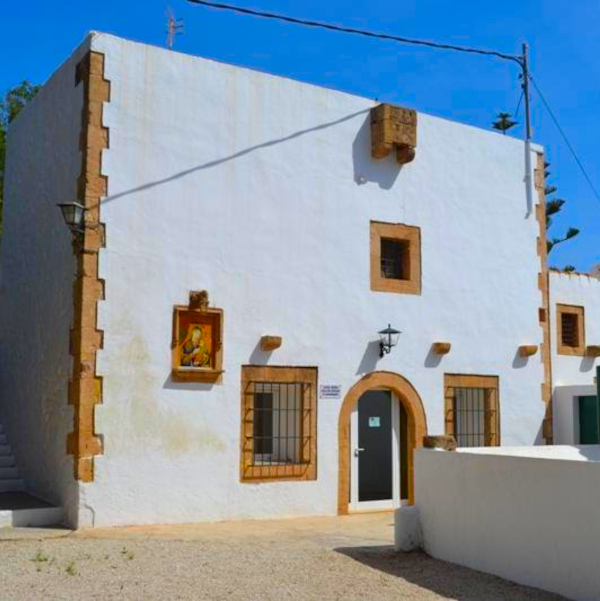
There is an old saying in Xàbia: “Smoke in the pine forest, Moors on the coast”, referring to the signals sent out by the guards in the watchtowers. When danger was approaching, the walls would be inspected and repaired if necessary, and quite often the livestock, women and children would be sent to take refuge within the walls of Dénia; the men, those capable at least, would prepare to defend their village.
In May 1561, the Portal de la Mar, closest to the sea, was even walled up and blocked after news of a fleet of galleys from the Barbary Coast had been spotted. Eight years later, after news of the uprising of moriscos in Granada reached them, the council ordered that provisions be gathered, and all defences inspected in case those moriscos in the Marina Alta also decided to revolt.
In 1584, the famous corsair Arnaut Mami and his fleet, attempting to land close to Cap Prim, was defeated by a militia force from Xàbia, aided by troops from the garrison at Dénia and the fortress of Bèrnia. Nine attackers were killed and two taken prisoner. By this time, Mami had become a renowned privateer, having taken writer Miguel de Cervantes captive in 1575 and sold him into slavery until his family paid the ransom.
In 1651, four inhabitants of Xàbia were kidnapped after a raid by Barbary pirates and held ransom until their release could be mediated by Mariana de Sandoval, Marquesa of Dénia.
In 1679, there was a great battle close to Cap Prim which still has a lasting impression on the people of Xàbia, particularly those living in the port. On March 8th, seven Moorish galleys attacked four Genoese ships, one of which was called ‘Virgen de Loreto’ captained by Agustin Germàn. It is a story told in the ‘Famous Romance of the Bravery of Germàn’ by a local writer called Vicente Sancho. Whilst three of the Genoese galleys manage to escape, the ‘Virgen de Loreto’ was surrounded by the seven ships and suffered from a barrage of cannon shot and musket fire. As rigging collapsed around them, the captain’s strong voice encouraged his men to victory against all the odds. During the four-hour long battle, more than 4,000 shots were fired, and more than 500 Moors were killed. It is said that the Virgen de Loreto was carrying an image of the Virgin which was carried ashore. Or that the bravery of the ship inspired the people of Xàbia. Or that the image of the virgin was actually already in Xàbia, since a church which once stood next to the Portal de la Mar within the walls of the town was built and dedicated to the virgin long before the battle. Whatever the real reason, the image is still venerated today during the port fiesta in September.
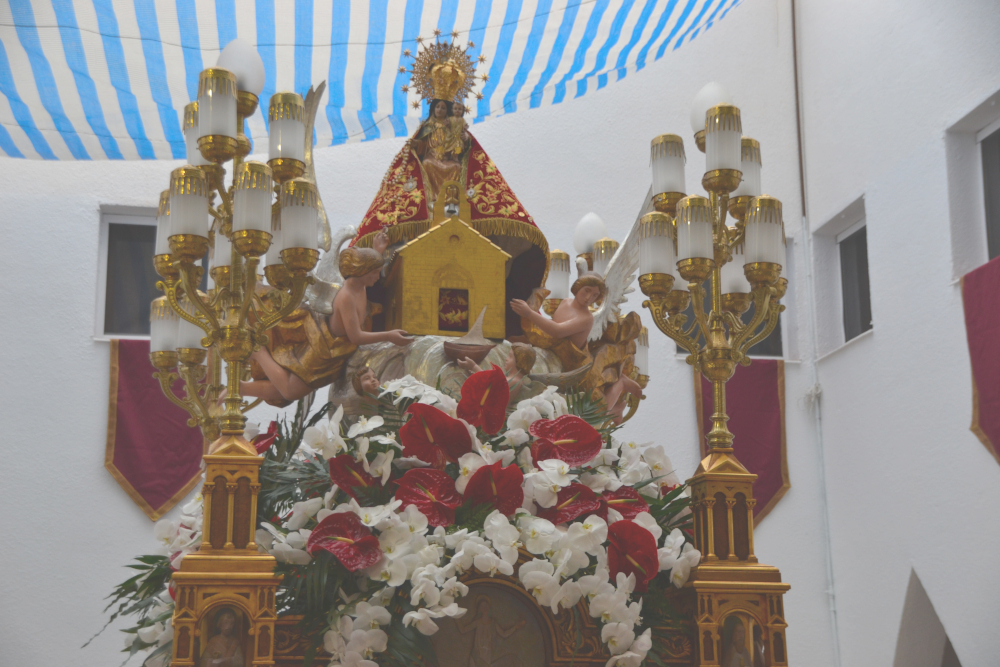
A century later, an Algerian boat attacked two ships from Catalonia carrying wine and brandy for the navy. Fleeing into the Granadella cove, more than 50 militamen armed with muskets managed to repel the attackers.
And, finally, in 1812, a group of privateers landed and entered the town through a hole in the wall where they robbed the mansions of the wealthy of Xàbia.
By the 1870s, the threat from pirates had diminished enough that the defensive wall was pulled down to allow the town to expand. It’s a real shame the wall wasn’t preserved – or least sections of it – and the only clue to its existence is the shape of the perimeter roads which follow their old course and the recent interpretations alongside Avenida Principe d’Asturias.
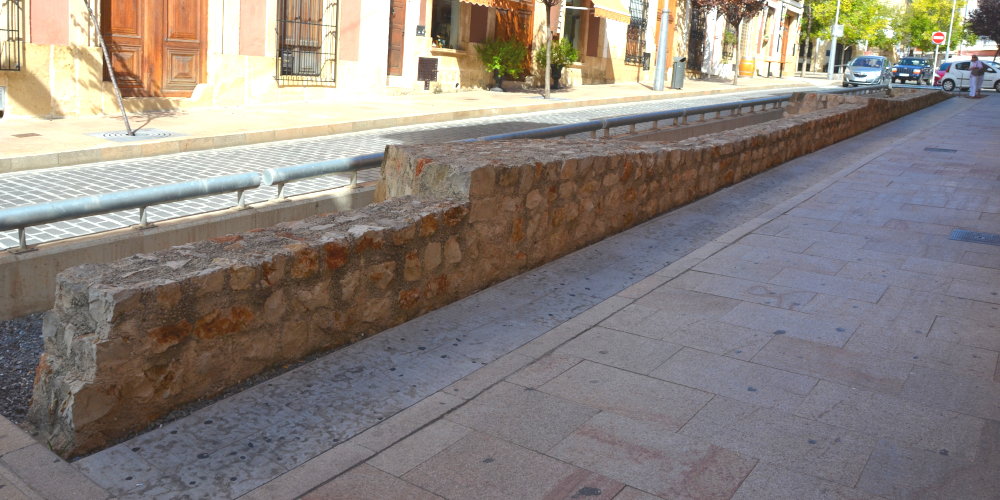
However, we are reminded every summer of the turbulent times that the people of this region lived for many centuries, of the landing of the Moorish pirates and their taking of property and lives, and of the struggle against them. The fight between the Moors & the Christians.
